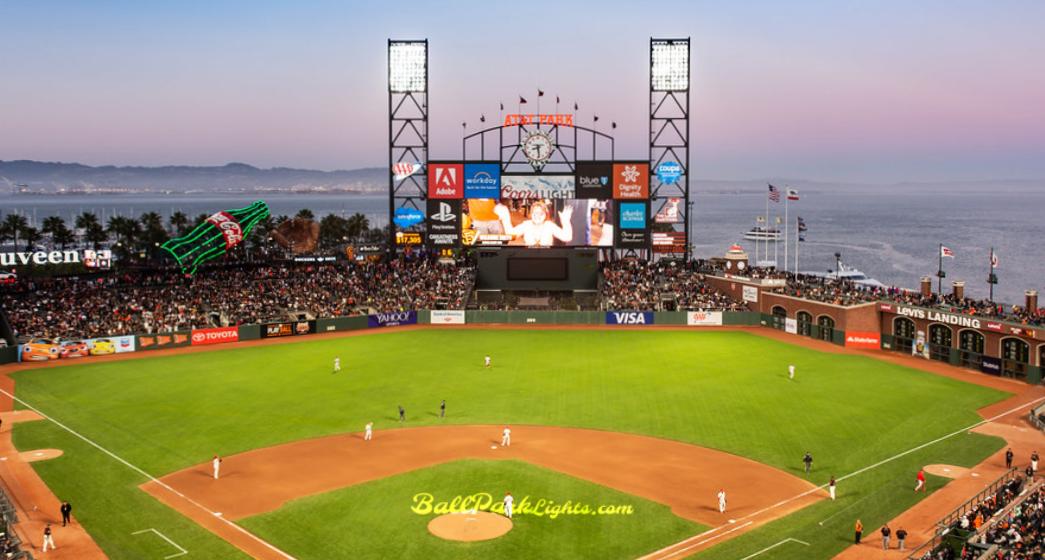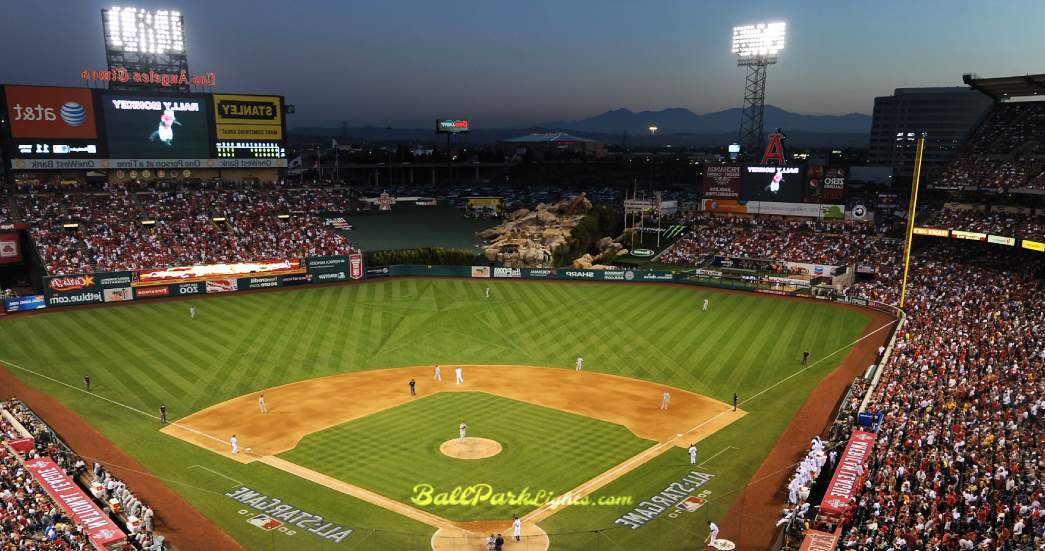The field, once cloaked in twilight, now glows under the artificial lights, setting the stage for a thrilling night of baseball. But have you ever stopped to consider how the color of that light affects the game you love? Let’s delve into the fascinating world of baseball field lighting and uncover the impact of color temperature on the sport you love.
Message us to get a free lighting design solution
The ambiance of a baseball game is influenced by various elements. When it comes to lighting a baseball field, color temperature is a vital factor that can affect visibility, performance, and overall enjoyment of the game. Understanding how color temperature impacts the perception of the environment can enhance the way baseball is experienced by everyone involved.

Table of Contents
ToggleColor temperature is measured in Kelvin (K) and describes the appearance of the light produced by a source. It ranges from warm tones, such as those produced by incandescent bulbs, to cooler tones, similar to daylight. Low color temperatures, typically around 2700K to 3000K, emit a warm white light that creates a cozy atmosphere. As the temperature rises to around 4000K to 5000K, the light shifts to a neutral white, while temperatures exceeding 6000K produce a bluish-white light similar to midday sunlight.
The right color temperature can enhance visibility, allowing players to track the ball more effectively while also creating an inviting atmosphere for fans. Understanding the psychology of color temperature is vital for maximizing the visual experience. Warmer light tends to be softer and more relaxing, whereas cooler light can be energizing and stimulating. This dynamic can influence not only player performance but also fan engagement during evening games.
Players’ ability to see and react to the ball is directly impacted by the type of lighting used on the field. Different color temperatures affect depth perception and contrast, which are crucial during gameplay. A cooler light, resembling natural daylight, can improve visibility and enhance the details on the field. This aspect is particularly significant during night games when natural light is absent. The right lighting setup can minimize shadows and glare, creating an environment where players can perform at their best.
Lighting a baseball field is a complex process that requires a careful balance of illumination levels across various areas of the field. Various governing bodies, including Major League Baseball (MLB) and the National Collegiate Athletic Association (NCAA), have set specific standards to guide the lighting of baseball fields, ensuring a uniform experience that benefits players and fans alike.
Different sections of the field require varying lux levels to optimize visibility. For example, the pitcher’s mound, home plate, and infield generally demand higher illumination compared to the outfield. A well-lit field not only enhances visibility for players but also improves the overall viewing experience for fans in attendance. Adequate lighting ensures that the game can continue without interruptions, regardless of the time of day.
Fields situated in areas with high ambient light levels may need to compensate with brighter lights, while fields in darker regions might achieve adequate visibility with lower levels of illumination. Furthermore, the design of the field and the positioning of light fixtures can significantly influence how light is distributed across the playing surface.
Advancements in lighting technologies have made it easier for stadium operators to meet these varying lighting requirements. Traditional metal halide lamps have been widely used in sports lighting but come with limitations, such as longer warm-up times and reduced efficiency. Newer technologies, such as LED systems, are rapidly gaining popularity due to their ability to provide higher lumens per watt, longer lifespans, and customizable color temperatures.
LED lighting allows for flexibility in adjusting color temperatures based on specific game needs. The ability to shift between warm and cool white lighting opens up possibilities for enhancing the overall game experience. For example, warm white lighting can create a nostalgic atmosphere during community events, while cool white lighting can take over during competitive games, optimizing visibility for players.
The choice of color temperature for baseball field lighting involves weighing the benefits of both warm and cool white lighting against the specific needs of the field. Fields used for different purposes may prioritize different aspects of lighting.
For instance, amateur leagues and community parks often lean toward warm white lighting, emphasizing a welcoming and enjoyable environment for families and casual players. This choice fosters a relaxed atmosphere where participants can enjoy the game without the pressures of competition.
In contrast, professional leagues prioritize performance and visibility, opting for cool white lighting. The need for optimal viewing conditions for both players and spectators drives this decision, with cool white light providing the clarity necessary for high-stakes games. Additionally, the adoption of advanced lighting technologies, such as LED systems, has made it easier to implement specific color temperatures tailored to the needs of the field.
Selecting the right color temperature also involves considering the psychological effects of lighting on players and spectators. Warmer lighting can evoke feelings of nostalgia and comfort, while cooler lighting can energize the atmosphere and encourage excitement. Each game may benefit from a different color temperature based on the context, whether it be a casual community event or a high-pressure playoff game.
Warm white lighting typically falls within the range of 2700K to 3000K and is characterized by its soft, yellowish hue. This type of lighting is often used in residential settings due to its inviting ambiance. When applied to a baseball field, warm white light can create a nostalgic atmosphere reminiscent of classic ballparks.
While warm white lighting has its charm, it may not be the best choice for competitive play, especially at higher levels. The softer light can make it challenging for players to distinguish the ball against the field, potentially impacting their performance. However, this color temperature can be beneficial for recreational leagues and community fields where the focus is on enjoyment rather than competitive intensity.
Cool white lighting ranges from 4000K to 5000K and emits a brighter, more neutral light that closely resembles natural daylight. This type of lighting is commonly used in professional sports venues, including baseball fields, as it enhances visibility and reduces shadows. The crispness of cool white light allows players to see the ball more clearly, improving their reaction times and overall performance.
The use of cool white lighting can also enhance the vibrancy of the field, making colors appear more vivid. This effect can be particularly advantageous for televised games, as the quality of the broadcast is significantly improved when the lighting is optimized. Fans watching from home benefit from the clearer visuals, creating a more engaging viewing experience.
In addition to player performance and visual quality, cool white lighting can positively impact fan engagement. Bright, well-lit fields create an electrifying atmosphere that enhances the excitement of the game, drawing fans in and encouraging them to participate in the event. The combination of optimal visibility and an engaging environment makes cool white lighting a preferred choice for many baseball fields.
The psychological impact of lighting extends beyond the players on the field. Spectators are more likely to enjoy the experience when the lighting is bright and vibrant, enhancing their emotional connection to the game. The right color temperature can evoke excitement and energy, making fans feel more involved in the action.

Designing the lighting system for a baseball field involves careful planning and consideration of various factors. The layout of the field, the position of the lighting fixtures, and the types of light sources used all play a role in creating an optimal lighting environment. A well-thought-out design ensures that the entire field is illuminated evenly, minimizing shadows and dark spots that could interfere with gameplay.
Fixtures positioned too low can create glare for players, while those positioned too high may lead to shadows on the field. A comprehensive lighting design will account for these factors to ensure optimal visibility for both players and spectators.
Advancements in technology have made it possible to create custom lighting solutions that cater to the specific needs of each field. Smart lighting systems allow operators to control the intensity and color temperature of the lights remotely, enabling them to adapt the lighting for different events. This flexibility is particularly valuable in stadiums that host a variety of sports and activities.
For example, during a night game, operators can increase the brightness and shift to a cooler color temperature to enhance visibility for players. Conversely, during a pre-game ceremony, they can soften the lighting and opt for a warmer hue to create a welcoming atmosphere. This adaptability ensures that the lighting complements the various aspects of the event, enhancing the overall experience.
Through careful consideration of lighting requirements, color temperature choices, and the evolving landscape of lighting technology, baseball fields can create an environment that enhances both player performance and fan engagement. With a variety of factors influencing these decisions, the ultimate goal remains to provide a visually stunning and enjoyable experience for everyone involved in the game.
Lighting choices can also impact the perception of the field itself. Bright, well-lit fields create a sense of vibrancy, while poorly lit areas may feel uninviting. The visual quality of the field can significantly influence the overall experience for both players and spectators, underscoring the importance of thoughtful lighting design.
Ultimately, the selection of color temperature for baseball field lighting is a multifaceted decision that considers the unique characteristics of each field and its intended use. By embracing advancements in technology and prioritizing effective lighting design, baseball venues can create engaging environments that elevate the experience for players and fans alike.
BallParkLights.com All rights reserved